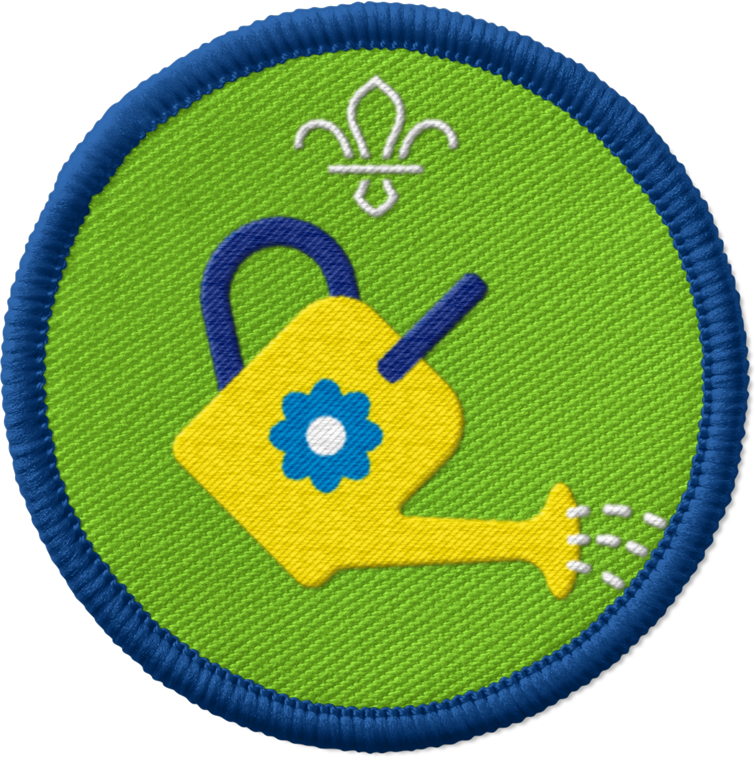
Go where it grows
You’ll need
- A4 paper
- Pens or pencils
- Coloured pens or pencils
- Sticky tack
Stick up the set up
- The person leading the activity should use pens and paper to make signs that show places where food grows.
- Each sign should be fixed up with sticky tack somewhere around the meeting place.
- There should be a sign for each of the following: Field, Farm, Plant, Animal, Sea, Trees, Jungle, Underground, Bushes, River.
Find the food
- The person leading the activity should ask the group to think about what they had for breakfast that day. They should try to imagine where the food they ate came from.
- When everyone has thought about this, pick some volunteers to talk about what they ate and where they think it came from (e.g. ‘cereal’ from a field, ‘milk’ from a cow).
- The person leading the activity should show the group the signs that they have fixed up around the meeting place. Explain that each one represents a different place that food comes from.
- The person leading the activity should look at the ‘Go where it grows’ table below. They should read out a food item from the ‘Food’ column.
- When they hear the name of the food, everyone should move close to the sign that says where that food comes from (e.g. for ‘potato,’ everyone should move towards the signs that say ‘underground,’ ‘plant’ or ‘field.’).
- When everyone has chosen a sign, the person leading the activity should read out the correct answer(s) and also the information in the third column, before moving on to the next food item. Continue until every food item has been read out.
|
Food |
Where it grows |
Discussion / Fact |
|
Chips |
Field / Farm |
Potatoes are vegetables but contain a lot of carbohydrates, which is why they don’t count towards your five-a-day. |
|
Ketchup |
Plant |
The average person eats three bottles of ketchup every year. |
|
Bread |
Farm |
Bread is made from flour, yeast and water. Flour is made from wheat, which you’ll see in lots of fields around the same time as the summer holidays. |
|
Beef burger |
Farm / Animal |
Can anyone tell you what animal beef comes from? One cow can make more than 700 beef burgers. |
|
Chicken drumstick |
Farm / Animal |
There are more chickens on earth than there are people – 25 billion! This is compared to just 7 billion people. |
|
Fish fingers |
Sea / Animal |
The most common type of fish in fish fingers is cod. |
|
Milk |
Farm / Animal |
Milk is really important to get lots of calcium in your body. Can anyone tell you why calcium is so important? ANSWER – To make your teeth and bones strong and healthy. People can drink plant milk as a substitute for cow’s milk. |
|
Bananas |
Farm / Trees / Jungle |
Bananas are really good for improving your mood because of the vitamins they contain. |
|
Cashew nuts |
Trees / Jungle |
Cashews grow in tropical countries, and need high temperatures to grow well. |
|
Baked beans |
Plants |
Baked beans aren’t vegetables, but they do count towards one of our five-a-day. |
|
Carrots |
Farm / Underground |
You can get different colour carrots, including red, white, yellow, and even purple! |
|
Eggs |
Farm / Animal |
Can anyone say what type of animal the eggs we eat come from? |
|
Scampi |
Sea / Animal |
Scampi is made from prawns. |
|
Parsnips |
Farm / Underground |
Parsnips are similar to carrots. |
|
Strawberries |
Plants / Bushes / Farm |
Strawberries have their seeds on the outside instead of the inside. Has anyone been to a ‘pick your own’ strawberry place? What was it like? |
|
Peanuts |
Underground / Plant |
Peanuts actually grow underground. The plant grows above the ground, but the actual nuts grow underground. |
|
Pasta |
Farm |
Pasta is made from durum wheat flour and water, and is very important in Italian cooking. |
|
Blackberries |
Plants / Bushes |
Has anyone ever been blackberry picking? In many parks and fields, you can find wild blackberries during the school holidays, which are delicious and free. Just make sure you wash them first. |
|
Salmon |
Sea / River / Animal |
Most salmon are born in rivers, live in the sea, and always return to the rivers to give birth – often in the exact place that they were born. |
|
Mangoes |
Trees / Jungle |
Nearly half of all the world’s mangoes are grown in India. There, they eat so many of them, than only 2% of them actually get sent to other countries. |
Reflection
The group has learned some more about where the food they eat comes from. Was anyone surprised by the origins of something they eat a lot? Does anyone think it looks easy to make a certain type of food for everyone to have enough, or hard? How many of these places should we eat food from and how often?
To assign each food item a place, the group had to work out where it came from and move between the signs. Was it tiring running back and forth? Were there any foods that made you disagree with someone else about the place it comes from? Were there any foods that you knew came from more than one place, meaning you had to choose one? How did you choose?
Safety
All activities must be safely managed. You must complete a thorough risk assessment and take appropriate steps to reduce risk. Use the safety checklist to help you plan and risk assess your activity. Always get approval for the activity, and have suitable supervision and an InTouch process.
- Active games
The game area should be free of hazards. Explain the rules of the game clearly and have a clear way to communicate that the game must stop when needed. Take a look at our guidance on running active games safely.
Mighty movers like to try this activity again with a twist. When moving towards a particular sign, each person should move in a particular way (e.g. for ‘underground,’ people should pretend to dig their way to the sign, and for ‘sea,’ people should pretend to swim their way to the sign.)
Anyone struggling to choose a place for a food item should look at what other people have chosen and think carefully about what that food looks, feels and tastes like. You could give them a cheeky hint for the difficult ones, like ‘scampi.’
You could bring in some of the items of food so that people can see, touch and taste the foods before thinking about where they come from.
Make sure that anyone with mobility issues is comfortable getting between the signs.
Make sure there is a quiet space set up for anyone who wishes to take some time away from the activity.
There are lots of reasons people might find talking about food tricky, including eating disorders, disordered eating, sensory sensitivities, and a lack of access to food or cooking facilities. Be sensitive in how you approach this activity – some people may appreciate knowing you’ll cover the topic in advance, you might need to take extra care to avoid talking too negatively about food (including food higher in sugar or fat), or you may want to keep it general and avoid asking people about their personal experiences, for example.
All Scout activities should be inclusive and accessible.
You could think about how factories are important for helping us access a wide variety of foods. What happens in factories? People might think about how some factories freeze fruit and veg (or put it in cans) so it lasts longer and we can enjoy it any time of year. Other factories might mix ingredients together to make products like cereal bars or ketchup. What do people think it’s like inside a factory?
If this topic’s captured people’s imaginations, you could arrange a visit to a farm, a city farm, an allotment, or even a factory, so people can see it for themselves.
Encourage young people to choose the sign they think and not always follow others. Remind them that other people could be mistaken!


